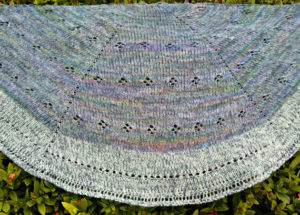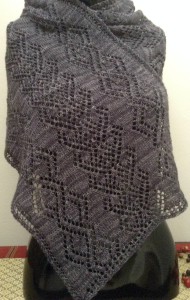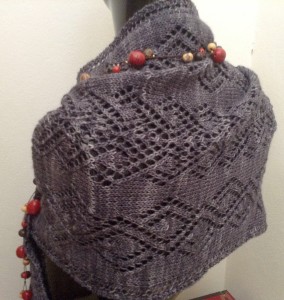Patterns available on Ravelry
Accessories available on Etsy
This light-as-air, soft-as-silk Garden at Nighttime scarf is an original design hand knit by me. The inky blue yarn is a washable blend of silk, extra-fine merino wool, and kid mohair. The color is a deep, vibrant blue, and it measures 9.5×56 inches (24×142.25 cm).
On a recent trip to England I stayed at a country hotel that was surrounded by traditional gardens of flowers, vines and shrubbery. Fortunately jet lag woke me up in the middle of the night and I spent some time looking out into the garden after dark and was inspired by the outlines of blossoms and tracings of vines and branches.
This design attempts to incorporate some of what I remember.
The scarf pictured here, which is available on Etsy, is a bit of a variation on the original pattern in that I used needles one size larger (US3/3.25mm instead of US2.5/3mm) as I wanted the lace pattern to be more open and prominent.
“Did You Know…?”
Using a larger-sized knitting needle in a lace pattern can mean using less yarn to achieve the finished size and also knitting fewer pattern repeats. For example, in the scarf pictured above, only 21 pattern repeats were required with the larger sized needles rather than 27 repeats.
You might want to consider this in rectangular shawls and wraps if you’d like the design to be even lacier than pictured in the original pattern. Be sure to use the weight of yarn called for if you want to achieve this.
Happy Knitting!
MikeH








